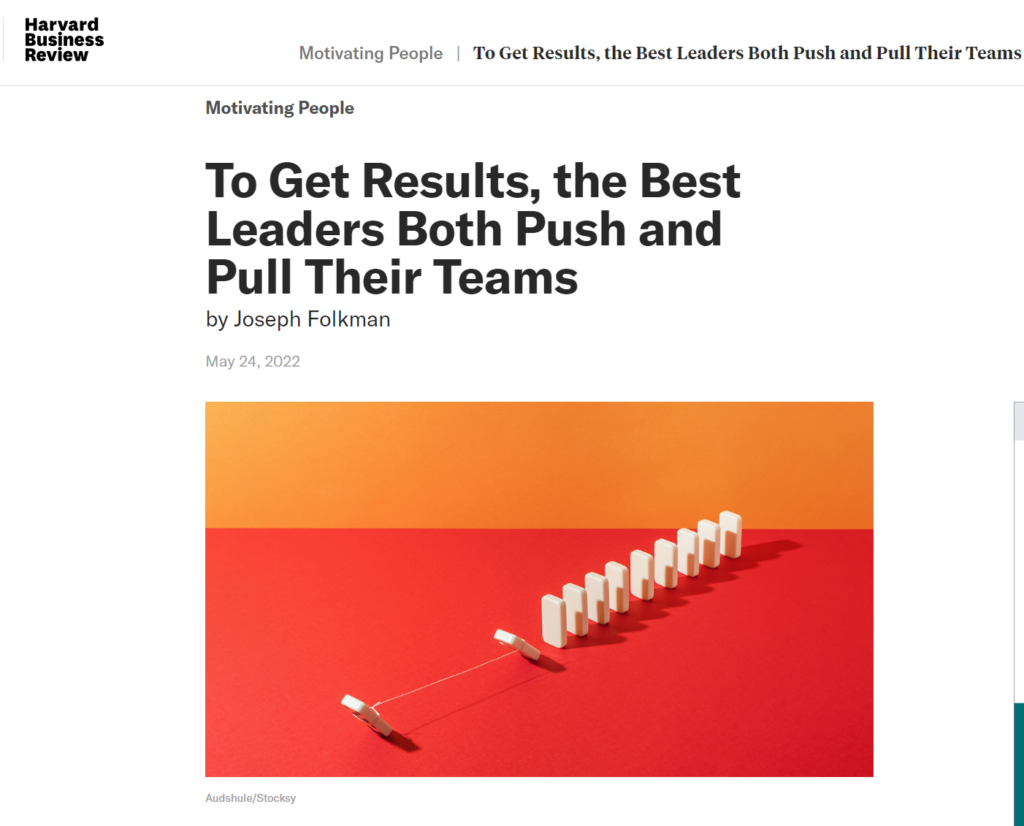What is Your Influencing Style? Is it Working?

Part 2/3. Welcome back to part 2 of this 3-part trilogy on…. influence. If you missed part 1 ..don’t! Click here. Previously, we looked at how research has revealed System 1 (Chimp brain) holds the keys to the decisions making process. This is a very important step to realize before we begin to develop influence strategies.
In this issue, we are going to look at the 2 main styles of influence, the benefits of each and which styles (according to research) will work best for you in the office.
Influencing at its heart, can be split into 2 main opposing types: push and pull. It is important to identify which is your go-to style and be aware of which strategy you are using with your target audience.
Let’s imagine a work scenario where you lead a team and increasingly there is a problem with staff members arriving late into the office. You would like to take action to change the behavior of these staff members.

So…how would you get your team members to come in on time? What kind of influence strategy would you use? Have a think about this for a minute or so and we will revisit your answer towards the end.
Influencing strategies can be broken into two main types: Push and Pull
Push Strategies (Think carrot and stick)
Push strategies are mostly deployed by people who exert their power. People are driven into action by authority. “Pushing” involves telling or demanding others to do something, potentially with a threat or deadline (stick) or reward (carrot). Typically, these “hard” tactics are the natural go-to (and often default) for managers. It is common for parents to use this type of strategy to get children to complete tasks too.
Advantages of push strategies are that they are quick and easy to deploy. However, disadvantages include people cheating the system and the difficulties associated (fairness) with merit awarding.
Going back to the earlier staff punctuality scenario, if you answered that you would get staff members to clock in and out (rules and standards strategy) deduct salary or holiday pay (force strategy) then these would all be classified as Push strategies.
Pull Strategies
Pull strategies are softer and there may be more of a dialogue and agreement/buy-in to complete a task. When using pull strategies, an explanation may be provided including the reasoning behind an initiative. The result is that the audience feels more motivated to complete an action.
Advantages of pull strategies are that they are effective in getting commitment. On the other hand, they can be slow to yield results.
Back to the earlier staff punctuality scenario, if you answered you would initially hold a few staff meetings to find out the biggest cause of tardiness. In that ensuing discussion, you learn that covid testing is the problem and subsequently devise a plan to help staff make it easier to test by allowing them to take an earlier lunch time then you would be using Pull strategies. These two above pull techniques are called bridging (listening to and getting the support of others) and environmental (changing the environment to encourage the action you want the audience to take) .
Under the pull strategy there are also sub-strategies including visioning (think Martin Luther King), joint problem solving and personal magnetism.
You may now be thinking ok so what is the most effective strategy to deploy? The answer will depend very much on your audience, your position and your desired outcome. You may decide to use 1-2 pull strategies first and then finally when all options have been exhausted revert to push. Hence going back to the punctuality scenario, if your initial strategy doesn’t work (earlier lunch break) then you may decide to revert to clocking in and out (push).
Interestingly, there has been a very recent study on this subject conducted by Joseph Folkman published in the Harvard Business Review. The conclusion is that both high push and pull strategies used in tandem increase staff confidence to achieve goals AND increase satisfaction in the workplace (see HBR May 2022 “To Get Results, The Best Leaders Both Push & Pull Their Teams”).

Issue takeaway. There are 2 main styles of influence – push and pull. As a leader you need to be aware of which levers to use depending on the task, the timing and your audience. Research shows that leaders would be best served to use a blend of both.
The above content is taken from our influencing skills programs. If you would like to see how our programs would positively support and drive change in your team and organization then please click here for more information including an outline. We would love to hear from you..
